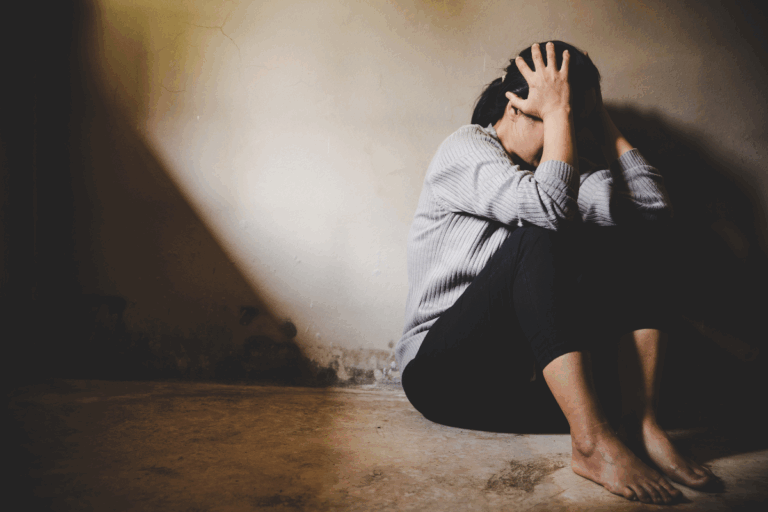
Atypical depression, formally recognized as “major depressive disorder with atypical features,” presents a unique clinical profile that distinguishes it from other depressive disorders. Unlike the classic presentation of depression, which often includes persistent sadness, insomnia, and weight loss, atypical depression is characterized by specific symptoms that can significantly impact diagnosis and treatment strategies.
What Is Atypical Depression?
Atypical depression is a subtype of major depressive disorder where individuals experience mood reactivity—meaning their mood can improve in response to positive events. This is in contrast to the more typical form of depression, where mood remains persistently low regardless of external circumstances. The Diagnostic and Statistical Manual of Mental Disorders, Fifth Edition (DSM-5), outlines the criteria for atypical depression, emphasizing the importance of recognizing this subtype for effective treatment planning.

Atypical Depression Symptoms
The symptoms of atypical depression include:
- Mood Reactivity: An improvement in mood in response to positive events.
- Increased Appetite or Weight Gain: A noticeable increase in appetite or significant weight gain.
- Hypersomnia: Excessive sleepiness or prolonged sleep durations.
- Leaden Paralysis: A heavy, leaden feeling in the arms or legs, making movement difficult.
- Rejection Sensitivity: A heightened sensitivity to interpersonal rejection, leading to significant social or occupational impairment.
These symptoms can vary in intensity and may overlap with other psychiatric conditions, making accurate diagnosis essential.
Prevalence and Demographic Considerations
Atypical depression is more prevalent than often assumed. Epidemiological studies indicate that approximately 15% to 29% of individuals with major depressive disorder exhibit atypical features. This form of depression tends to manifest earlier in life, often during adolescence or early adulthood, and is more commonly diagnosed in women. Understanding these demographic patterns can aid clinicians in identifying at-risk populations and tailoring preventive strategies accordingly.
Treatment Approaches

Pharmacotherapy
Pharmacological treatment for atypical depression often involves the use of monoamine oxidase inhibitors (MAOIs), which have shown efficacy in individuals with atypical features. However, due to dietary restrictions and potential side effects, MAOIs are typically considered when other antidepressants have proven ineffective. Selective serotonin reuptake inhibitors (SSRIs) and serotonin-norepinephrine reuptake inhibitors (SNRIs) are also commonly prescribed, with the choice of medication tailored to the individual’s specific symptoms and medical history.
Psychotherapy
Cognitive-behavioral therapy (CBT) and interpersonal therapy (IPT) have demonstrated effectiveness in treating atypical depression. These therapeutic approaches focus on modifying negative thought patterns and improving interpersonal relationships, which can be particularly beneficial for individuals experiencing rejection sensitivity and interpersonal difficulties.
Lifestyle Modifications
Incorporating lifestyle changes, such as regular physical activity, structured sleep routines, and balanced nutrition, can complement pharmacological and psychotherapeutic interventions. Addressing issues like hypersomnia and leaden paralysis through behavioral strategies can enhance overall treatment outcomes.
Long-Term Management
The course of atypical depression can be chronic, with individuals experiencing recurrent episodes throughout their lives. Early intervention and comprehensive treatment plans that include pharmacotherapy, psychotherapy, and lifestyle modifications are crucial in managing symptoms and improving quality of life. Regular monitoring and adjustments to the treatment regimen may be necessary to address evolving symptoms and prevent relapse.
Final Thoughts
Atypical depression presents a distinctive clinical profile that requires careful consideration for accurate diagnosis and effective treatment. Recognizing the unique symptoms associated with this subtype, such as mood reactivity and hypersomnia, allows for tailored interventions that can significantly improve patient outcomes. Given its prevalence and potential for chronicity, it is imperative for healthcare providers to remain vigilant in identifying atypical depression and implementing comprehensive treatment strategies to support affected individuals in managing their condition effectively.
Responsibly edited by AI
Other Blog Posts in
Animo Sano Psychiatry is open for patients in North Carolina, Georgia and Tennessee. If you’d like to schedule an appointment, please contact us.
Get Access to Behavioral Health Care
Let’s take your first step towards. Press the button to get started. We’ll be back to you as soon as possible.ecovery, together.





